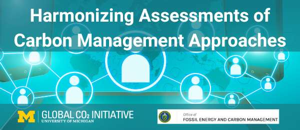The PVC compounding industry has been shaken up in recent years by changes in chemical regulations that have removed some traditional additives from the marketplace and put new emphasis on renewable aspects including bio-based plasticisers and recycling. There have been many voluntary agreements within the PVC associations to make advances ahead of any legal requirement and this has made them a leader in areas like recycling. This year in Europe there will be more changes in recipes as standard biocides used in protecting many outdoor applications such as waterproof covers will have to be replaced with alternatives. There are also discussions as to whether some bio-based ingredients require a biocide to prevent degradation.
Applied Market Information (AMI) has organised a forum to discuss the changes at the 5th international compounding conference PVC Formulation 2013, which takes place from 12th-14th March 2013 at the Hilton Hotel, Dusseldorf, Germany. This event brings together the global vinyl industry to review new PVC additives, recipes, technology, legislation and market drivers. Leading compounder Vinnolit will kick off with a review of the PVC market in Europe, followed by a look at the PVC market in the growing Turkish economy by Mr. Ali Murat Ayar.
The leading profile producer Deceuninck will give a keynote paper on the advances in responsible action on the theme reduce, reuse and recover. Reagens is part of a group aiming for the sustainable use of additives and the CEO Dr Ettore Nanni will outline this project. The European Union has legislated against the use of heavy metals and this has affected PVC stabilization with moves away from very effective lead formulation in profiles, to new products such as Ca/Zn. Stabilization systems in the construction industry will be on show from Baerlocher. Naturally occurring minerals are useful not only as fillers but also as active ingredients like flame retardants and this will be demonstrated by Minelco. Phosphate esters have flame retardant effects and plasticising properties: Lanxess will look at the effect of these additives on PVC compound properties in combination with antimony trioxide, zinc borate and fillers.
The status of the current plasticisers market will be presented by the European Council for Plasticisers and Intermediates (ECPI). There is a growing trend in the plastics industry for bio-based and natural materials. In the PVC industry this is mainly seen in the bio-based plasticisers. In the US this gives a high percentage of renewable carbon for the USDA Biopreferred programme. The South Americans have vast land areas for crop development and have taken a lead in supplying bio-plasticisers. Varteco Quimica Iberica from Argentina will give an overview of this market, while PETROM – Petroquimica Mogi Das Cruzes of Brazil with its partner Proviron Functional Chemicals will show some of the new plasticisers. Hallstar has also developed natural products for this market. However, what are the effects on the rest of the recipe of this substitution? Are these materials so biodegradable that they need microbicides to preserve the vinyl?
The EU Biocides Directive is going to affect a commonly used ingredient: OBPA antimicrobials which are widely used in outdoor applications as a preservative will be banned. Akcros Chemicals will review the changes and the alternative formulations, and some of the provisional data on the potential need for biocides when using bio-sourced ingredients. From Switzerland, Sanitized has studied antimicrobial protection for PVC with bio-based plasticisers.
PVC is widely used in food packaging particularly as film, and a producer and expert service provider Polycomply Hoechst will review the current standards. From the flooring manufacturer”s viewpoint, James Halstead/Polyflor will outline the industry requirements.
Many factors affect PVC compounding: Chemson will examine the effect and regulation of humidity. Impact strength alongside thermal stability will be the topic of Dow. Foaming is a growing technology to reduce material use and weight: Kaneka Belgium is looking at more foam with less additives. Processing aids like PE waxes will be discussed by BASF. Product appeal is enhanced with a good colour range and Holland Colours specialises in the PVC area.
What are the alternative additives for formulations? What are the requirements of end-users? Are there improvements in PVC processing? How are PVC markets developing? Is it feasible to incorporate recyclate? These are some of the debating points at PVC Formulation 2013.
Source
Applied Market Information, press release, 2012-11-02.
Supplier
Akcros Chemicals
Applied Market Information, Ltd. (AMI)
BASF SE
Chemson Polymer
Deceuninck
Dow Chemical Company
European Council for Plasticisers and Intermediates (ECPI)
European Union
Holland Colours
Kaneka Corporation
Lanxess AG
Minelco
Petrom
Polyflor
Proviron
Reagens
US Department of Agriculture (USDA)
Varteco Quimica Iberica
Share
Renewable Carbon News – Daily Newsletter
Subscribe to our daily email newsletter – the world's leading newsletter on renewable materials and chemicals










